Easy and Fast Butter Swim Biscuits
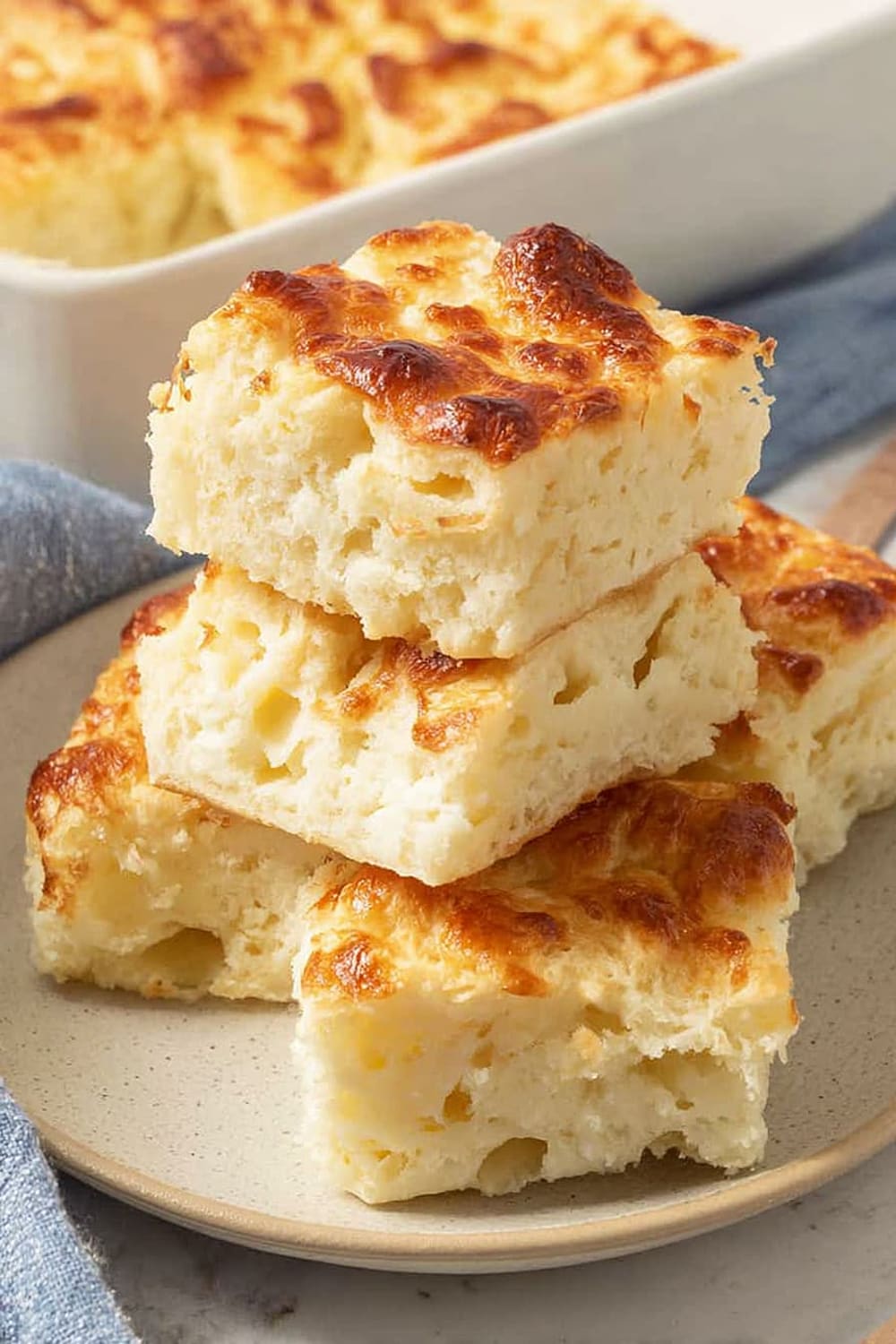
These butter swim biscuits are about to become your new obsession, and honestly, you’re going to feel like a baking genius even though they’re ridiculously simple to make.
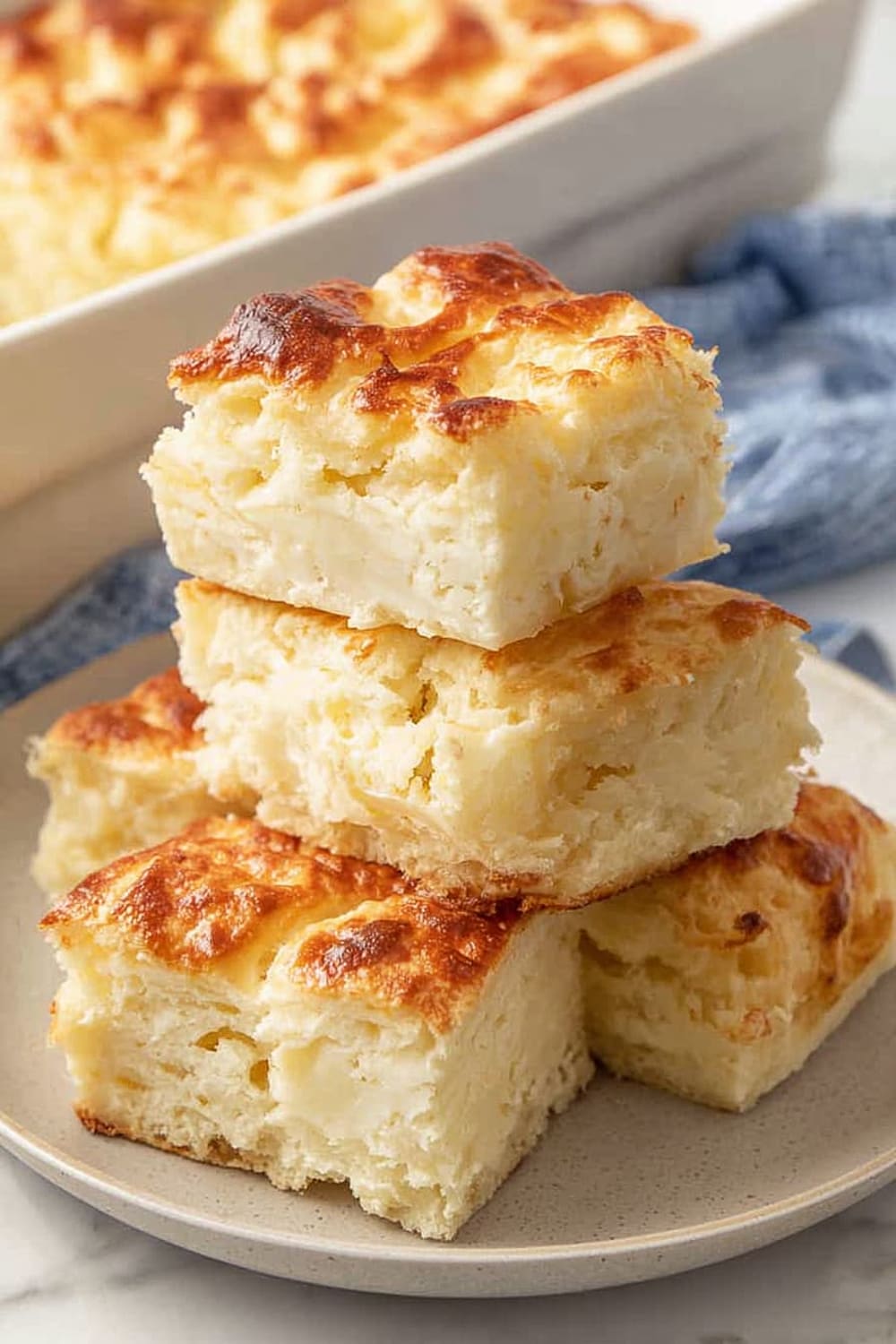
Picture this: fluffy, golden biscuits literally swimming in a pool of melted butter, creating the most incredible crispy bottom and tender, flaky interior you’ve ever experienced.
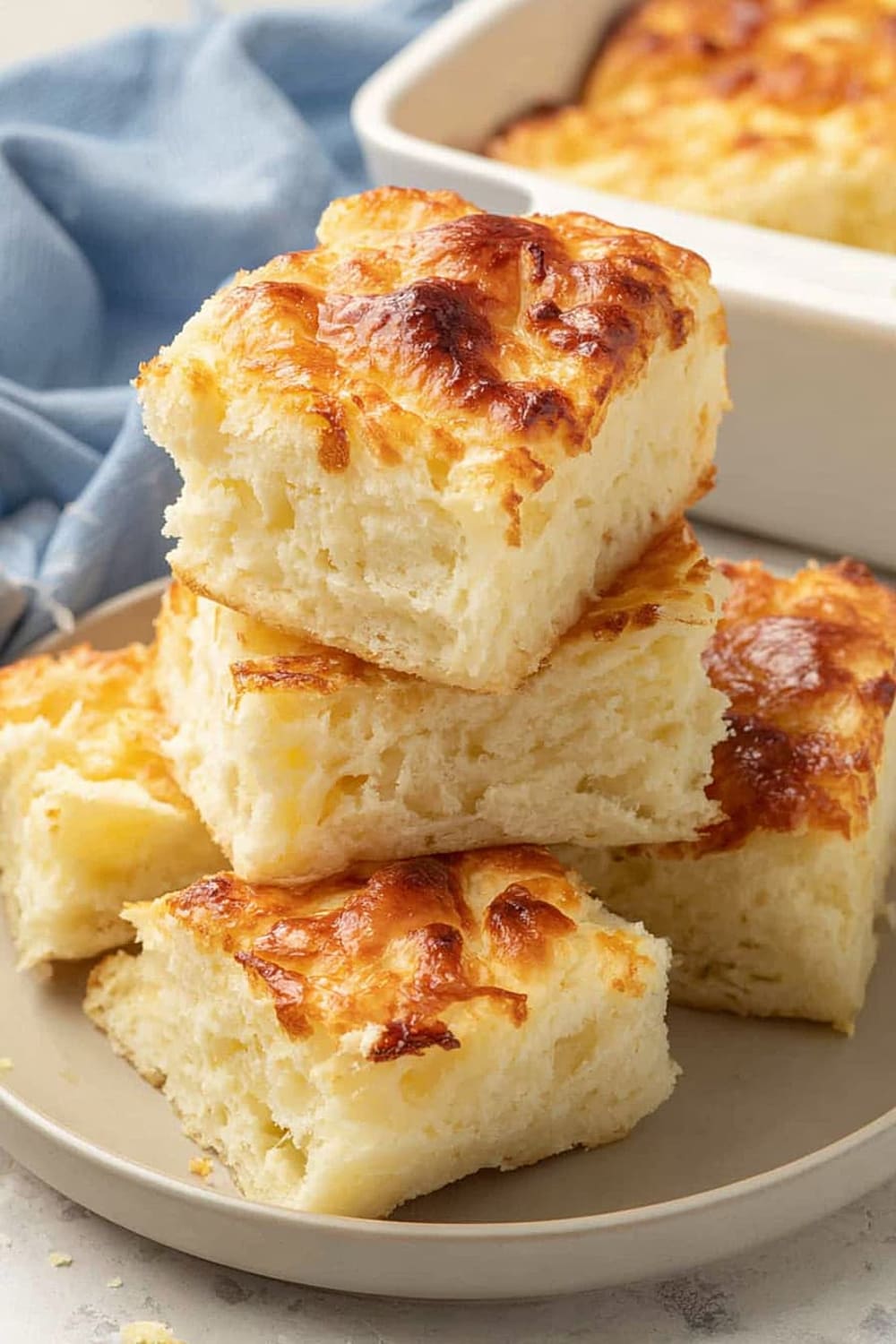
The genius of this recipe is that you pour the batter directly onto hot melted butter in the pan, which creates this amazing self-basting effect that keeps every bite incredibly moist and buttery.
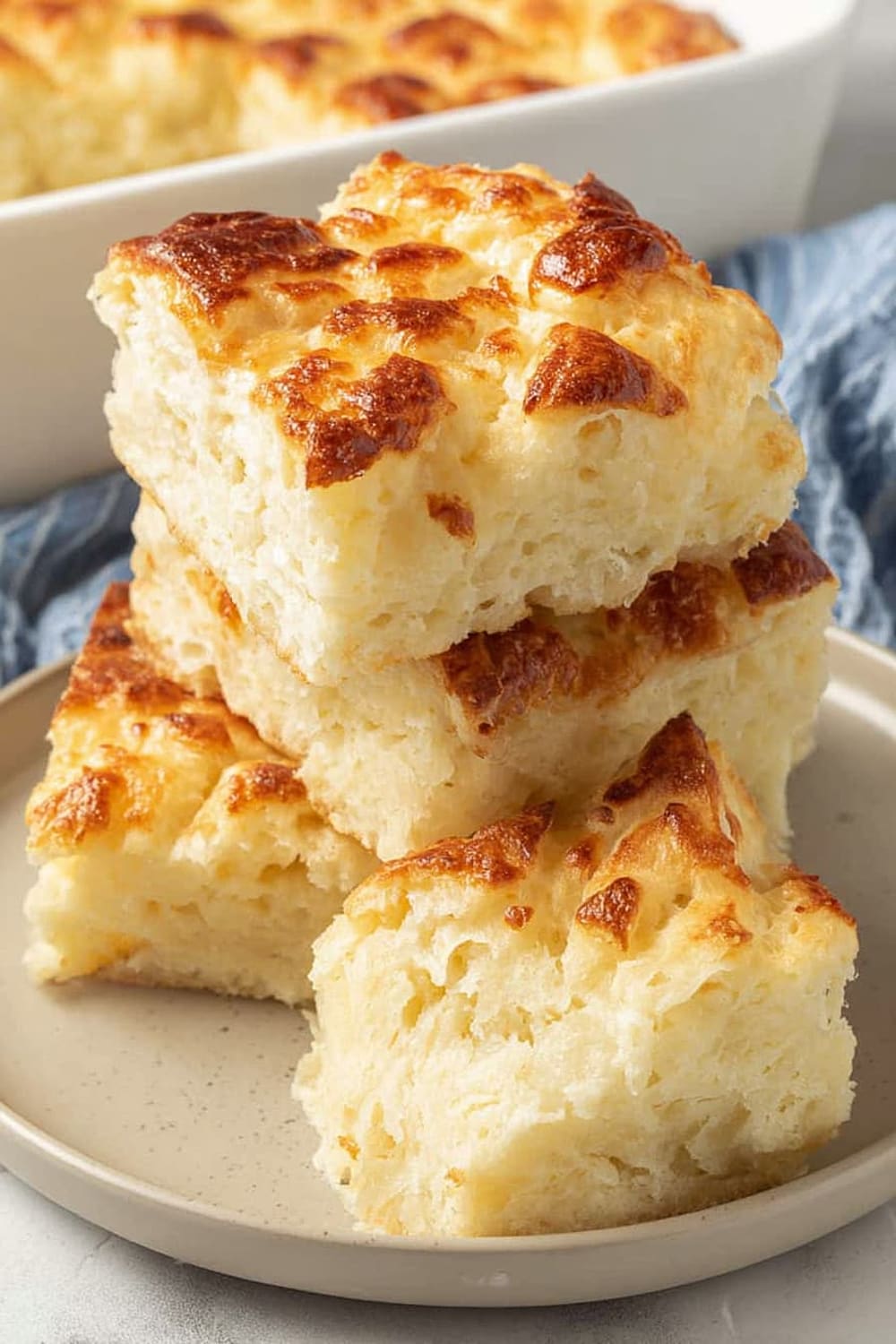
You’ll have people asking for your secret, and you can smugly tell them it takes exactly 30 minutes from start to finish with ingredients you probably already have in your kitchen.
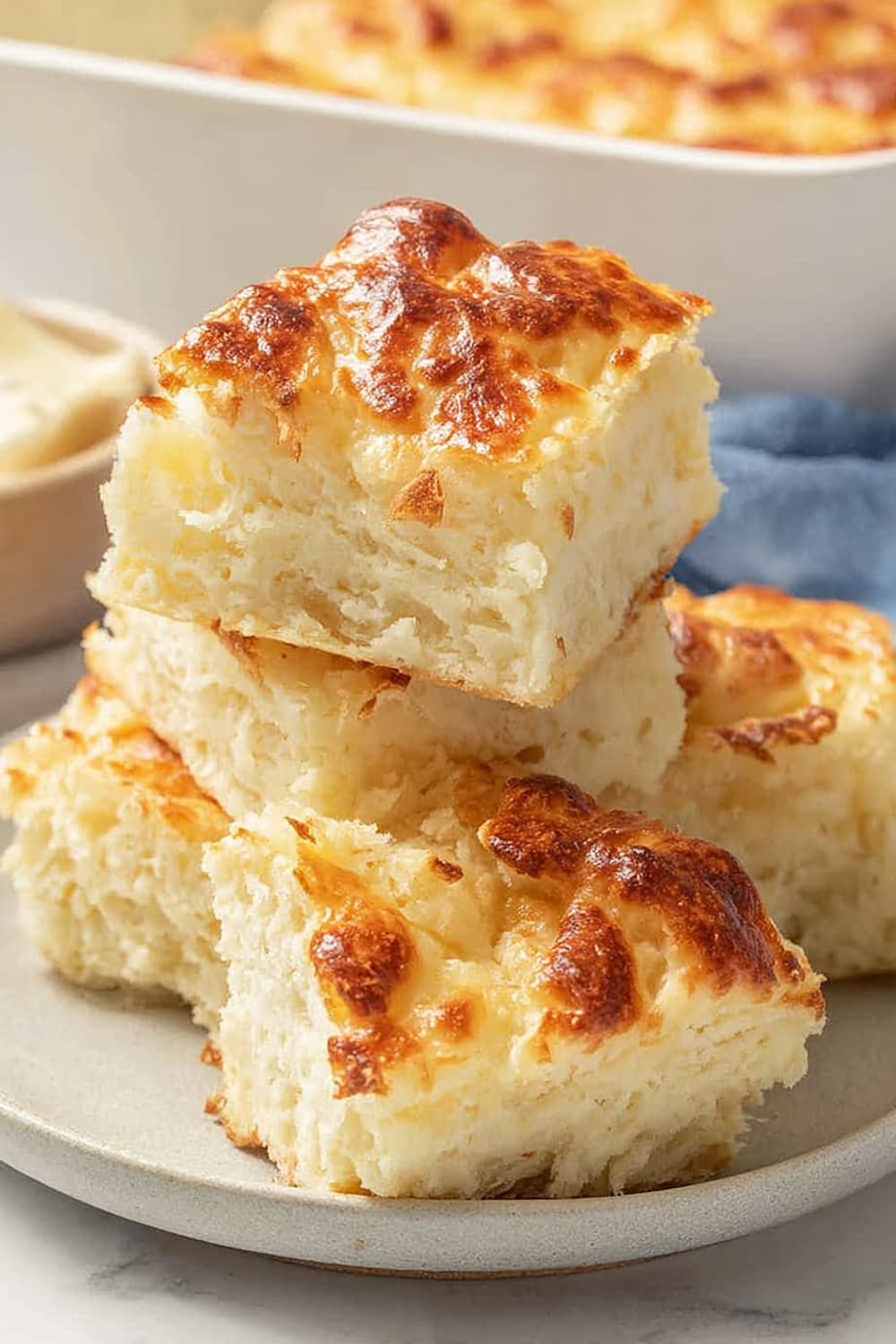
The aroma alone will have your entire household gravitating toward the kitchen, and the golden-brown tops with those perfectly crispy edges will make you feel like you just stepped out of a Southern cooking show.
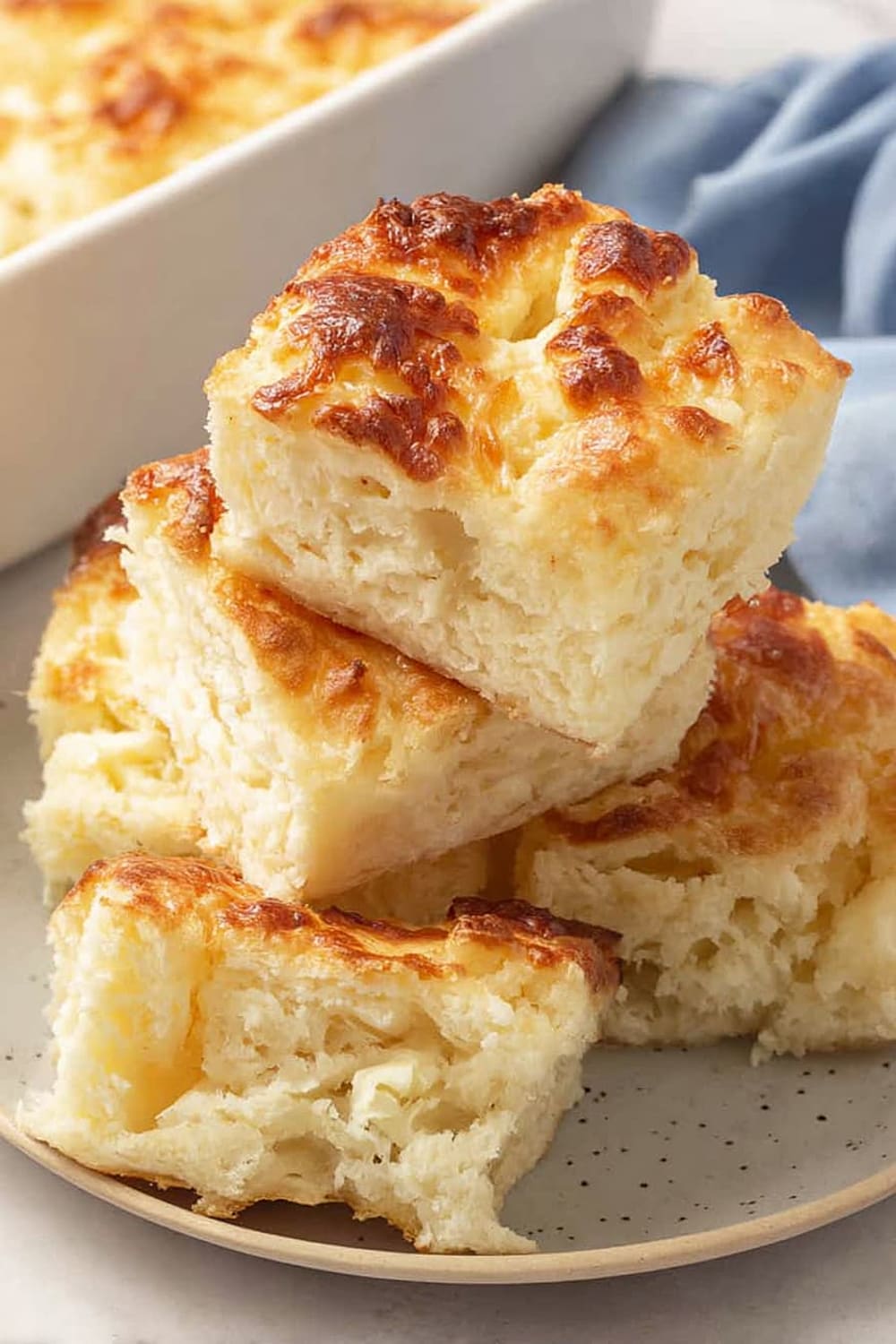
Fair warning: these biscuits are dangerously addictive, and you might find yourself making them every weekend because they’re just that good and that easy.
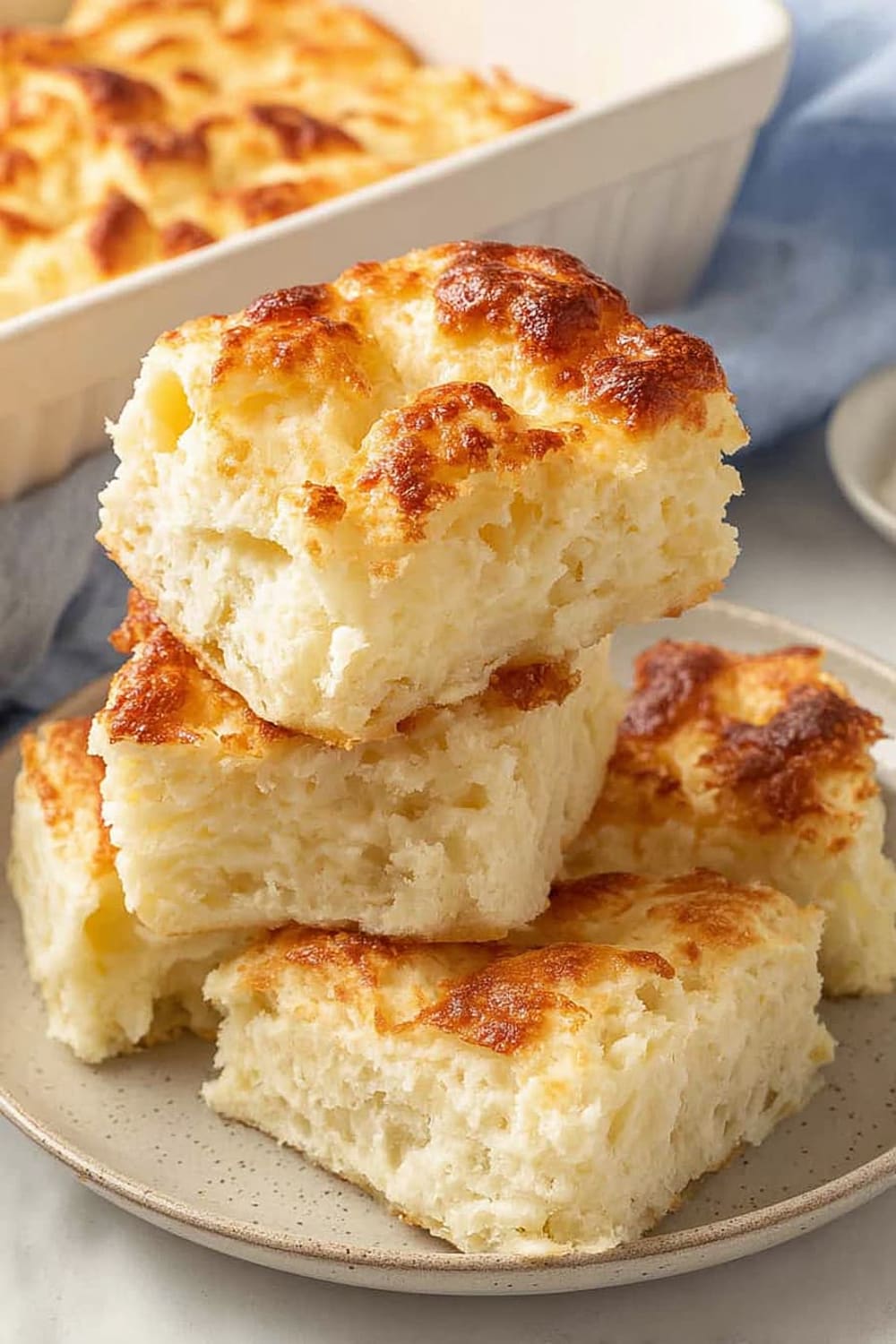
Ingredients
For the Butter Swim Biscuits
- 1 /2 cup unsalted butter
- 2 1/2 cups all-purpose flour
- 2 teaspoons salt
- 4 teaspoons baking powder
- 1 tablespoon granulated sugar
- 2 cups full-fat buttermilk, room temperature
Instructions
Preparation
- 1 Position your oven rack in the middle of the oven and preheat to 450°F (232°C). Add the 1/2 cup unsalted butter to a 9×9-inch casserole dish and place it inside the oven while it’s preheating. This allows the butter to melt completely and get hot, which is crucial for creating that signature crispy bottom crust.
Make the Biscuit Batter
- 2 In a large mixing bowl, whisk together 2 1/2 cups all-purpose flour, 2 teaspoons salt, 4 teaspoons baking powder, and 1 tablespoon granulated sugar until well combined. Make sure there are no lumps in the dry ingredients, as this ensures even distribution of the leavening agents.
- 3 Pour in the 2 cups room-temperature buttermilk and stir with a wooden spoon or silicone spatula until just combined. The batter should look slightly lumpy and shaggy – don’t overmix, as this can lead to tough biscuits. The consistency should be more like a thick batter than a traditional biscuit dough.
Assemble and Bake
- 4 Carefully remove the hot casserole dish from the oven using oven mitts. The butter should be completely melted and sizzling. Pour the biscuit batter directly on top of the hot melted butter – you’ll hear it sizzle, which is exactly what you want.
- 5 Using a silicone spatula or butter knife, gently spread the dough to cover the entire surface of the pan. The batter will be floating on the butter, which creates the signature “butter swim” effect. Run a sharp knife through the dough to cut 9 equal squares, each approximately 3 inches. Don’t worry about cutting all the way through – just score the surface.
- 6 Bake for 20-25 minutes, rotating the pan once halfway through cooking, until the tops of the biscuits are golden brown and the edges are crispy. The internal temperature should reach 190°F (88°C) when tested with an instant-read thermometer. Serve immediately while hot for the best texture and flavor.
Recommended Equipment and Kitchen Tools
Essential Tools (for best results)
- Large mixing bowl – A wide bowl makes it easier to incorporate the buttermilk without overmixing the batter
- 9×9-inch casserole dish – The exact size matters for proper butter distribution and even baking
- Silicone spatula – Won’t scratch your baking dish and helps spread the batter gently over the hot butter
- Sharp knife – For scoring the biscuit squares cleanly through the batter
Helpful Upgrades
- Digital kitchen scale – For more precise flour measurements, especially if you bake frequently
- Instant-read thermometer – Takes the guesswork out of checking doneness and ensures perfect results every time
- Bench scraper – Makes transferring and serving the finished biscuits much easier
Nice-to-Have Options
- Whisk – Helps ensure your dry ingredients are perfectly combined before adding the buttermilk
- Oven mitts with extended cuffs – Extra protection when handling the hot buttery dish
- Parchment paper – Not necessary for this recipe, but handy for easy cleanup if you’re making multiple batches
Recipe Variations and Dietary Modifications
Gluten-Free Adaptation
- Replace 2 1/2 cups all-purpose flour with 2 1/2 cups gluten-free flour blend (ensure it contains xanthan gum)
- Add 1/2 teaspoon xanthan gum if your blend doesn’t include it
- Expect slightly denser texture but still deliciously buttery flavor
- May need an extra 2-3 minutes baking time
Dairy-Free Modifications
- Substitute 1/2 cup vegan butter or coconut oil for the unsalted butter
- Replace 2 cups buttermilk with 2 cups non-dairy milk plus 2 tablespoons lemon juice (let sit 5 minutes)
- Oat milk or cashew milk work best for rich flavor
Flavor Variations
- Herb Biscuits: Add 2 tablespoons fresh chopped herbs (rosemary, thyme, or chives) to dry ingredients
- Cheese Biscuits: Fold in 1 cup shredded sharp cheddar cheese before adding buttermilk
- Sweet Biscuits: Increase sugar to 3 tablespoons and add 1 teaspoon vanilla extract
- Garlic Butter: Melt 2 minced garlic cloves into the butter before adding to pan
Whole Grain Version
- Replace 1 cup all-purpose flour with 1 cup whole wheat pastry flour
- Add 1 tablespoon honey to balance the nuttier flavor
- Increase buttermilk by 2-3 tablespoons if batter seems too thick
Nutritional Information and Health Benefits
Key Nutritional Highlights
Each biscuit contains approximately 280 calories, with 14 grams fat, 32 grams carbohydrates, and 7 grams protein. The buttermilk provides probiotics and calcium, while the all-purpose flour contributes B vitamins and iron. The moderate protein content makes these biscuits more satisfying than many bread alternatives.
Health Benefits of Main Ingredients
Buttermilk is rich in probiotics that support digestive health and contains less fat than regular milk while providing calcium, potassium, and vitamin B12. The all-purpose flour is often enriched with folate, iron, and B vitamins essential for energy metabolism. Butter provides fat-soluble vitamins A, D, E, and K, plus conjugated linoleic acid when sourced from grass-fed cows. The baking powder adds small amounts of calcium and phosphorus.
Dietary Considerations
These biscuits contain gluten, dairy, and are vegetarian-friendly. Each serving provides about 15% of daily calcium needs and 20% of daily iron requirements. The buttermilk’s probiotics may aid in lactose digestion for those with mild sensitivities. For balanced nutrition, pair with protein-rich foods and fresh vegetables.
Smart Swaps and Ingredient Substitutions
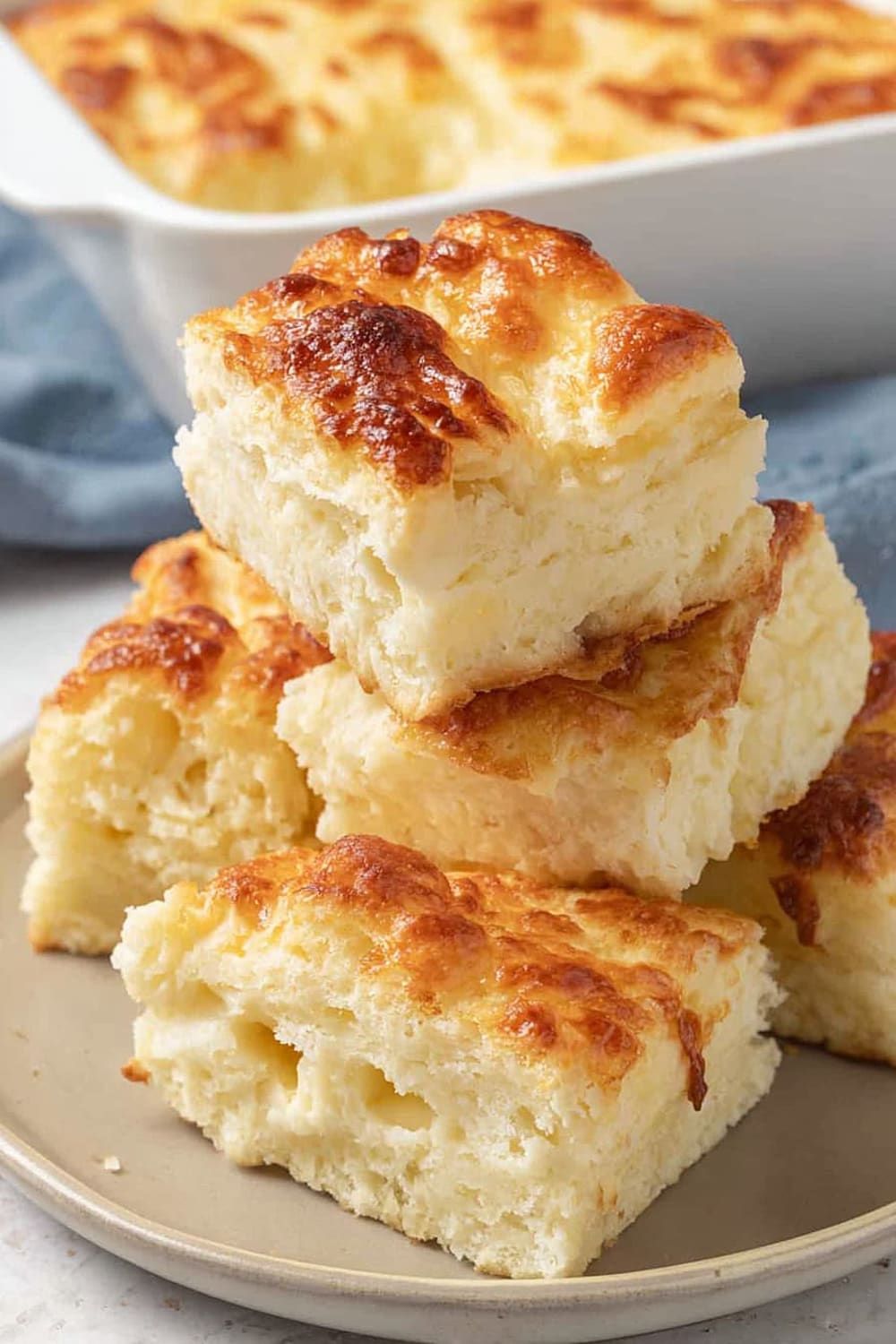
Common Substitutions:
- All-purpose flour → Self-rising flour (use 2 1/4 cups and omit baking powder and salt)
- Buttermilk → Regular milk + lemon juice (2 cups milk + 2 tablespoons lemon juice, let sit 5 minutes)
- Unsalted butter → Salted butter (reduce salt in recipe to 1 teaspoon)
Budget-Friendly Swaps:
- Buttermilk → Powdered buttermilk (1/4 cup powder + 2 cups water)
- Unsalted butter → Vegetable shortening (same amount, melted)
- Granulated sugar → Honey (2 teaspoons honey, reduce buttermilk by 1 tablespoon)
Pantry Emergency Substitutions:
- Baking powder → Baking soda + cream of tartar (1 teaspoon baking soda + 2 teaspoons cream of tartar)
- Buttermilk → Plain yogurt thinned with milk (1 cup yogurt + 1 cup milk)
- All-purpose flour → Bread flour (same amount, expect slightly chewier texture)
Pro Tips for Substitutions:
- Always bring dairy substitutes to room temperature for best mixing
- When using salted butter, taste batter and adjust salt accordingly
- Store leftover buttermilk powder in the freezer for up to 6 months
Make It Diabetes-Friendly
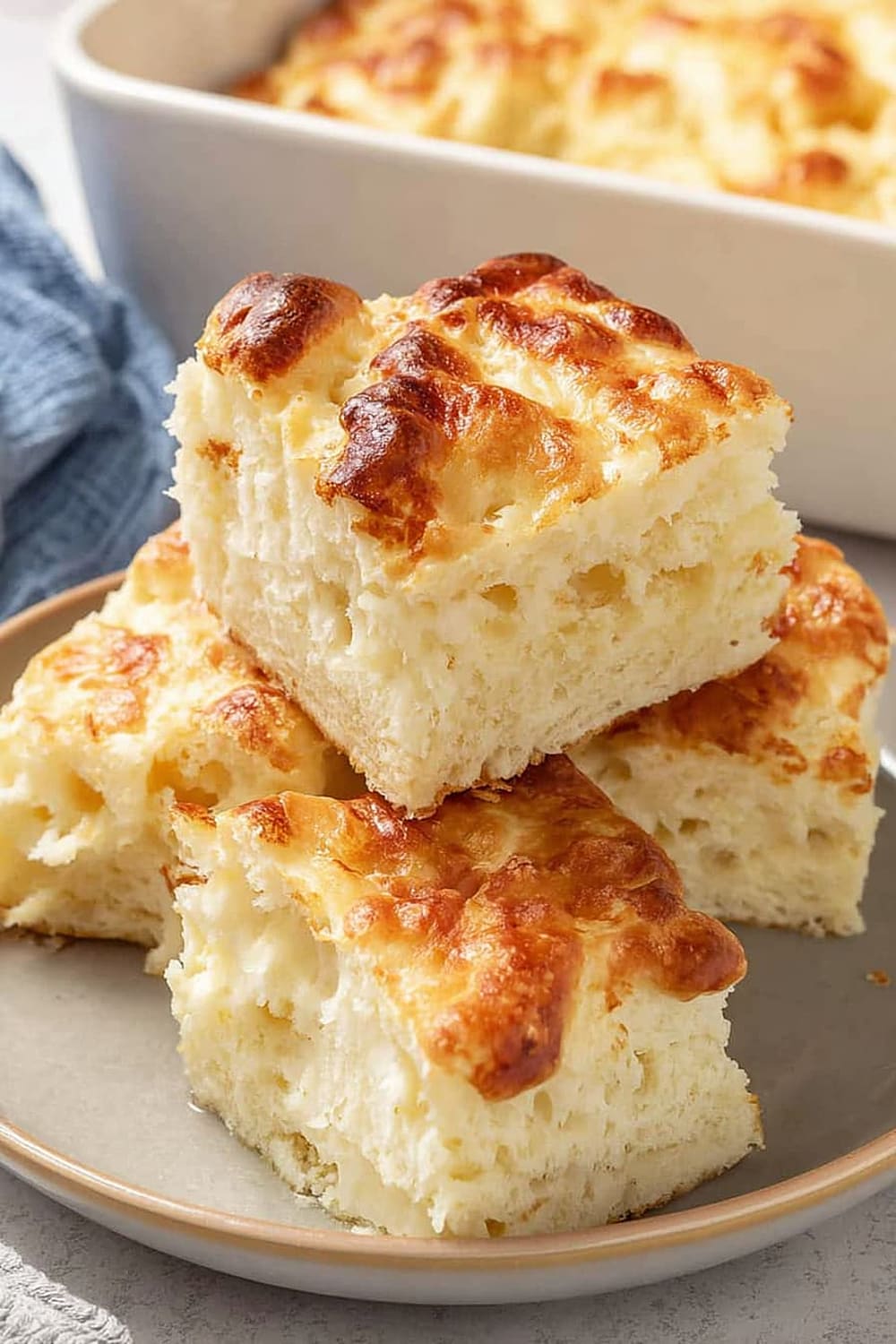
Flour & Carb Modifications:
- Replace 1 cup all-purpose flour with 1 cup almond flour to reduce carbs by approximately 15 grams per serving
- Use 2 cups all-purpose flour + 1/2 cup coconut flour for a 20% carb reduction
- Add 1 tablespoon psyllium husk when using alternative flours for better texture
- Consider 1 3/4 cups all-purpose flour + 3/4 cup protein powder for higher protein content
Sugar Substitutions:
- Replace 1 tablespoon granulated sugar with 1 tablespoon erythritol or 1/2 tablespoon stevia blend
- Monk fruit sweetener works well at 1 teaspoon for the same sweetness level
- Sugar-free options reduce carbs by 3 grams per serving
Portion & Timing Tips:
- Cut into 12 smaller squares instead of 9 for better portion control
- Each smaller serving contains approximately 20 grams carbs vs 27 grams for regular size
- Pair with 2 tablespoons almond butter or 1 ounce cheese to slow glucose absorption
- Best consumed with protein-rich meals to minimize blood sugar spikes
Total Carb Reduction: Modified version reduces carbs by approximately 25-30% per serving
Perfect Pairing Suggestions
Beverage Pairings
Coffee pairs beautifully with these buttery biscuits, especially a medium roast that won’t overpower the delicate flavor. Sweet tea or fresh lemonade creates a perfect Southern comfort combination. For adults, champagne or prosecco makes these biscuits elegant enough for brunch entertaining. Cold milk is classic and helps balance the rich butter content.
Side Dish Recommendations
Serve alongside scrambled eggs with fresh herbs and crispy bacon for the ultimate breakfast spread. Honey butter and strawberry jam are traditional accompaniments that complement the subtle sweetness. Sausage gravy turns these into a hearty brunch centerpiece. Fresh fruit salad with berries provides a bright, acidic contrast to the rich butter.
Complete Meal Ideas
Build a Southern-style breakfast with these biscuits, country ham, grits, and fresh orange juice. For dinner, pair with fried chicken, coleslaw, and green beans. Create an elegant brunch buffet featuring the biscuits with smoked salmon, cream cheese, and capers. Soup and biscuit combos work wonderfully – try with tomato soup or chicken and dumplings.
Occasion Suggestions
Perfect for lazy weekend mornings, holiday brunches, or potluck gatherings. These biscuits shine at baby showers and bridal brunches when served with assorted jams and spreads. Weeknight comfort dinners become special when you add these warm, buttery biscuits to the table.
Pro Tips and Troubleshooting
Professional Techniques
Always use room temperature buttermilk – cold liquid can cause the hot butter to solidify and create uneven texture. Don’t overmix the batter; lumps are your friend and indicate proper gluten development control. Rotate the pan halfway through baking to ensure even browning, especially if your oven has hot spots. Score the biscuits before baking but don’t cut all the way through – this helps them separate cleanly after baking.
Common Mistake Prevention
Never skip preheating the butter – cold butter won’t create the signature crispy bottom. Measure flour correctly by spooning it into the cup and leveling off; packed flour creates dense, heavy biscuits. Check your baking powder expiration date – old leavening agents result in flat, dense biscuits that won’t rise properly.
Storage and Reheating
Store leftover biscuits covered at room temperature for 2 days or refrigerated for up to 5 days. Reheat in a 350°F (175°C) oven for 5-7 minutes to restore crispiness. Freeze for up to 3 months wrapped individually in plastic wrap. Make-ahead tip: Prepare the dry ingredients the night before and store covered.
Scaling and Presentation
Double the recipe using a 9×13-inch pan for larger crowds. Cut into triangles instead of squares for elegant presentation. Brush tops with melted butter immediately after baking for extra richness and shine.
These butter swim biscuits prove that sometimes the most impressive results come from the simplest techniques, and you’ll find yourself making them again and again because they’re just that good and that foolproof.